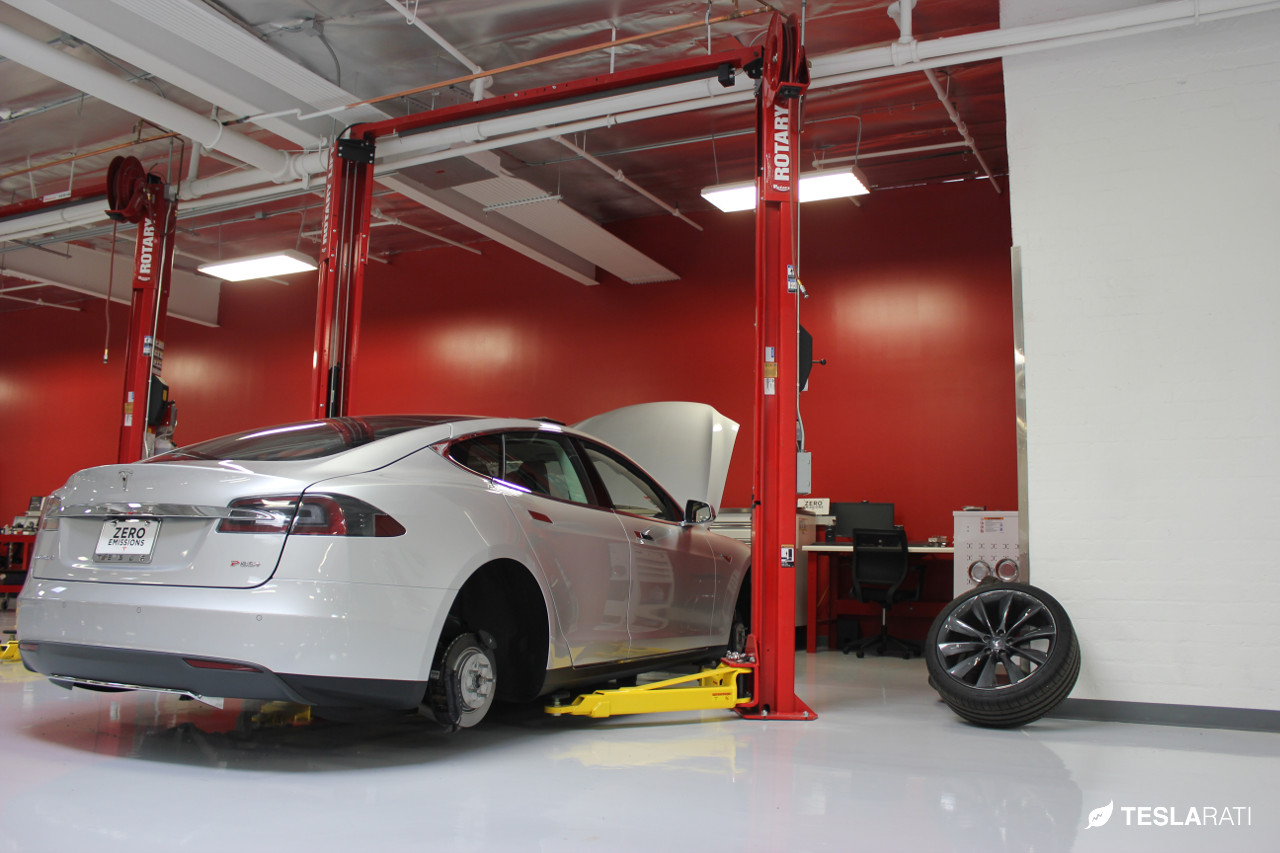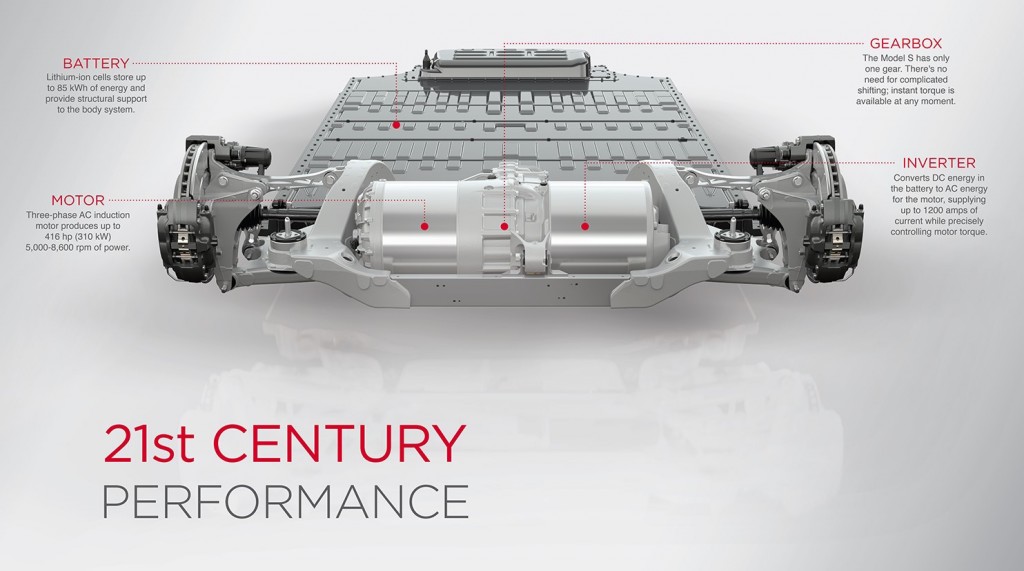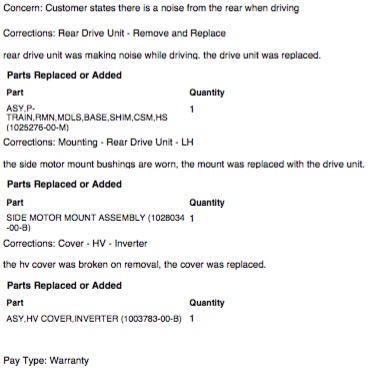

News
Tesla Model S Drive Unit Replacement by the Numbers
During my early days of researching the Tesla Model S, I had concerns about a number of things that were emerging in the press. Fires, Model S drive unit issues, and handling in the snow. Tesla quickly addressed the “firegate” issue by retrofitting the Model S with a titanium shield. My concerns around winter driving, in particular handling in the snow, also became a non-issue after watching several winter driving videos put together by Bjørn Nyland.
Within no time, I became a new Model S owner and quickly learned that driving in the winter could actually be quite fun with a good set of winter tires. Tesla later introduced the all-wheel drive “D” models putting to rest any remaining doubt that the Model S could be the best and safest handling car in the world.
But one question still remains for me, Has Tesla dealt with the Drive Unit issues?
Model S Drive Unit Replacement by the Numbers
There is a group of Model S owners across the forums, but also validated by major publications such as Edmunds, that have had one or more drive unit replacements.
Early reports of drive unit issues ranged from total failures that left the Model S inoperable, to more recent complaints of clunking and milling noises. Elon has said in the past that many of these pre-emptive drive unit replacements were unnecessary and a simple $0.50 shim was all that was really needed, yet Tesla Service centers have been proactively replacing drive units.
The following polls from TMC show that a majority of Model S owners have had their drive units replaced.
While the poll only represents a small sample of Model S owners, one might draw significance in the numbers as the density circles around owners needing a drive unit replacement at relatively low mileage, and without any harsh driving prior to failure.
The polls also give insight to the motive behind each drive unit replacement.
Though it appears the issues mainly center around earlier versions of the Model S, there’s been reports of newer Model S with Autopilot hardware hearing milling noises coming from the drive unit. One viewer described the sound as “sawing wood”.
Tesla’s Response to Drive Unit Issues
In typical Tesla fashion, the company acted fast to address the issues, and curb concerns by offering an unlimited mile/8 year warranty on the drive unit. I think this was a great response by Tesla which put to rest any concerns about the quality and long term durability of their drive units.
Elon is now talking about building a power train that will last a million miles and I believe Tesla continues to put significant energy into improving the drive units. Tesla continues to honor the warranty and is proactively replacing drive units that show early signs of problems.

My Experience
After 12 months of Model S ownership and 30k miles drive, I started hearing a humming noise from the rear of my Model S during highway cruising. The noise was unusual as I had gotten used to hearing only the noise of the tires and wind, but there was a new noise only noticeable when cruising or decelerating with regeneration at 65 MPH and over. The noise continued to become more audible over the next few months, but I learned to live with it and did not contact Tesla. My personal rule of thumb on noise related issues is to wait for passengers to comment on it first. It’s my self crazy check.
Two months after the original drive unit humming noises began, a higher pitched milling type noise started occuring when traveling at speeds of 20 MPH or less. The sound varied depending on how much power was being used. That’s when I reached out to Tesla.

Tesla service record
Tesla service had me come in for a test drive which they can do on demand without you needing to wait. We drove about a block before the Tesla service technician said the drive unit needed to be replaced.
The explanation was that tolerances inside the drive unit have led to metal particles getting into the fluid around the drive unit, and as the concentration of particles increased, it caused the noise from the drive unit to become louder when under load. The new drive units evidently have better tolerances and are less prone to having metal particles being shaved off.
At that time, Tesla service has been very backed up here in Massachusetts so my appointment for the drive unit replacement was scheduled six weeks out. I put on another 4,000 miles during that wait time, with an increasingly louder drive unit, before it was finally replaced.
When Tesla replaces a drive unit, they replace both the drive unit and inverter as you can see from a copy of the parts list. The last letter in the drive unit part number (“M” in my case) seems to indicate the generation of the drive unit. The later the letter the better, with the “Q”s seeming to have the best longevity according to the forums.
I’m happy to say that I’ve logged 8,000 miles of happy and noise-free driving after my drive unit replacement. The replacement was done recently so my guess is that I have a newer unit, and thus hope this will be my only replacement.
Thankfully for all of us, Tesla has a first class warranty and level of service. While it goes without saying that inconveniences such as this may happen, rest assured that Tesla has you covered and will always strive to make things right.

Elon Musk
Elon Musk and Tesla AI Director share insights after empty driver seat Robotaxi rides
The executives’ unoccupied tests hint at the rapid progress of Tesla’s unsupervised Robotaxi efforts.

Tesla CEO Elon Musk and AI Director Ashok Elluswamy celebrated Christmas Eve by sharing personal experiences with Robotaxi vehicles that had no safety monitor or occupant in the driver’s seat. Musk described the system’s “perfect driving” around Austin, while Elluswamy posted video from the back seat, calling it “an amazing experience.”
The executives’ unoccupied tests hint at the rapid progress of Tesla’s unsupervised Robotaxi efforts.
Elon and Ashok’s firsthand Robotaxi insights
Prior to Musk and the Tesla AI Director’s posts, sightings of unmanned Teslas navigating public roads were widely shared on social media. One such vehicle was spotted in Austin, Texas, which Elon Musk acknowleged by stating that “Testing is underway with no occupants in the car.”
Based on his Christmas Eve post, Musk seemed to have tested an unmanned Tesla himself. “A Tesla with no safety monitor in the car and me sitting in the passenger seat took me all around Austin on Sunday with perfect driving,” Musk wrote in his post.
Elluswamy responded with a 2-minute video showing himself in the rear of an unmanned Tesla. The video featured the vehicle’s empty front seats, as well as its smooth handling through real-world traffic. He captioned his video with the words, “It’s an amazing experience!”
Towards Unsupervised operations
During an xAI Hackathon earlier this month, Elon Musk mentioned that Tesla owed be removing Safety Monitors from its Robotaxis in Austin in just three weeks. “Unsupervised is pretty much solved at this point. So there will be Tesla Robotaxis operating in Austin with no one in them. Not even anyone in the passenger seat in about three weeks,” he said. Musk echoed similar estimates at the 2025 Annual Shareholder Meeting and the Q3 2025 earnings call.
Considering the insights that were posted Musk and Elluswamy, it does appear that Tesla is working hard towards operating its Robotaxis with no safety monitors. This is quite impressive considering that the service was launched just earlier this year.
Elon Musk
Starlink passes 9 million active customers just weeks after hitting 8 million
The milestone highlights the accelerating growth of Starlink, which has now been adding over 20,000 new users per day.

SpaceX’s Starlink satellite internet service has continued its rapid global expansion, surpassing 9 million active customers just weeks after crossing the 8 million mark.
The milestone highlights the accelerating growth of Starlink, which has now been adding over 20,000 new users per day.
9 million customers
In a post on X, SpaceX stated that Starlink now serves over 9 million active users across 155 countries, territories, and markets. The company reached 8 million customers in early November, meaning it added roughly 1 million subscribers in under seven weeks, or about 21,275 new users on average per day.
“Starlink is connecting more than 9M active customers with high-speed internet across 155 countries, territories, and many other markets,” Starlink wrote in a post on its official X account. SpaceX President Gwynne Shotwell also celebrated the milestone on X. “A huge thank you to all of our customers and congrats to the Starlink team for such an incredible product,” she wrote.
That growth rate reflects both rising demand for broadband in underserved regions and Starlink’s expanding satellite constellation, which now includes more than 9,000 low-Earth-orbit satellites designed to deliver high-speed, low-latency internet worldwide.
Starlink’s momentum
Starlink’s momentum has been building up. SpaceX reported 4.6 million Starlink customers in December 2024, followed by 7 million by August 2025, and 8 million customers in November. Independent data also suggests Starlink usage is rising sharply, with Cloudflare reporting that global web traffic from Starlink users more than doubled in 2025, as noted in an Insider report.
Starlink’s momentum is increasingly tied to SpaceX’s broader financial outlook. Elon Musk has said the satellite network is “by far” the company’s largest revenue driver, and reports suggest SpaceX may be positioning itself for an initial public offering as soon as next year, with valuations estimated as high as $1.5 trillion. Musk has also suggested in the past that Starlink could have its own IPO in the future.
News
NVIDIA Director of Robotics: Tesla FSD v14 is the first AI to pass the “Physical Turing Test”
After testing FSD v14, Fan stated that his experience with FSD felt magical at first, but it soon started to feel like a routine.

NVIDIA Director of Robotics Jim Fan has praised Tesla’s Full Self-Driving (Supervised) v14 as the first AI to pass what he described as a “Physical Turing Test.”
After testing FSD v14, Fan stated that his experience with FSD felt magical at first, but it soon started to feel like a routine. And just like smartphones today, removing it now would “actively hurt.”
Jim Fan’s hands-on FSD v14 impressions
Fan, a leading researcher in embodied AI who is currently solving Physical AI at NVIDIA and spearheading the company’s Project GR00T initiative, noted that he actually was late to the Tesla game. He was, however, one of the first to try out FSD v14.
“I was very late to own a Tesla but among the earliest to try out FSD v14. It’s perhaps the first time I experience an AI that passes the Physical Turing Test: after a long day at work, you press a button, lay back, and couldn’t tell if a neural net or a human drove you home,” Fan wrote in a post on X.
Fan added: “Despite knowing exactly how robot learning works, I still find it magical watching the steering wheel turn by itself. First it feels surreal, next it becomes routine. Then, like the smartphone, taking it away actively hurts. This is how humanity gets rewired and glued to god-like technologies.”
The Physical Turing Test
The original Turing Test was conceived by Alan Turing in 1950, and it was aimed at determining if a machine could exhibit behavior that is equivalent to or indistinguishable from a human. By focusing on text-based conversations, the original Turing Test set a high bar for natural language processing and machine learning.
This test has been passed by today’s large language models. However, the capability to converse in a humanlike manner is a completely different challenge from performing real-world problem-solving or physical interactions. Thus, Fan introduced the Physical Turing Test, which challenges AI systems to demonstrate intelligence through physical actions.
Based on Fan’s comments, Tesla has demonstrated these intelligent physical actions with FSD v14. Elon Musk agreed with the NVIDIA executive, stating in a post on X that with FSD v14, “you can sense the sentience maturing.” Musk also praised Tesla AI, calling it the best “real-world AI” today.











